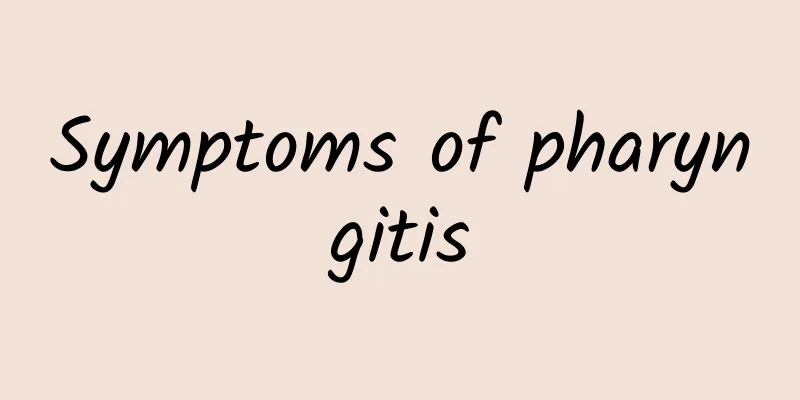Basilar artery occlusion?

|
Basilar artery occlusion is also known as BAO. It is a potentially fatal ejaculatory system disease. Patients with cerebral infarction are prone to basilar artery occlusion. Most patients with cerebral infarction will have varying degrees of hypertension. Patients with cerebral infarction must actively treat hypertension, eat a scientific diet, and develop good living habits. The following introduces several key points of basilar artery occlusion syndrome. Basilar artery occlusion (BAO) is a potentially fatal neurological disease that is challenging for clinicians to diagnose and treat, accounting for approximately 1%-4% of all ischemic strokes. Recently, The Neurohospitalist magazine published a review written by American scholars Demel et al., which detailed the clinical manifestations, causes and current treatment strategies of BAO. Posterior circulation anatomy The posterior circulation supplies blood to the back of the brain, including the brainstem, thalamus, cerebellum, and occipital lobe. The vertebral arteries arise bilaterally from the subclavian arteries and unite at the pontomedullary junction to form the basilar artery (BA). BA can be divided into three segments: proximal, middle and distal. The most distal end of the basilar artery gives rise to the bilateral posterior cerebral arteries (PCA), which supply the occipital lobe and inferior temporal lobe; the medial temporal lobe is supplied through larger arterial branches, and the thalamus and superior midbrain are supplied through perforating arteries. Other important branches of the BA include the superior cerebellar artery (SCA), the anterior inferior cerebellar artery, and the pontine perforating arteries. Basilar artery occlusive syndrome Compared with anterior circulation stroke, posterior circulation stroke has a longer prodromal period, which may last for days or months. The most common prodromal symptoms include dizziness and nausea, followed by headache and neck pain. Dizziness and vertigo are the most common early symptoms of BAO, but they are nonspecific and need to be differentiated from peripheral vertigo. The head impulse-nystagmus-torsion (HINTS) examination is a sensitive assessment tool that helps differentiate central from peripheral vertigo. The ABCD2 score can also help identify higher-risk patients. The probability of a vertigo patient with a score > 6 or 7 being diagnosed with stroke is approximately 27%. The lower the score, the lower the possibility of stroke. Patients with vertigo who also had at least one other neurological symptom were more likely to be diagnosed with stroke than those with isolated vertigo. Oculomotor paralysis, oropharyngeal dysfunction, ataxia, and limb weakness are the most common symptoms. Other symptoms include abnormal eye movements, asymmetric pupils, respiratory disturbances, dysmetria, and altered level of consciousness. Symptoms vary in severity, from isolated cranial nerve palsies to quadriplegia, locked-in syndrome, and even coma. One of the most lethal manifestations of BAO is occlusion of the mid-basilar artery, resulting in bilateral pontine ischemia; these patients present with a fully conscious "comatose" state, quadriplegia, and only vertical eye movements. This "locked-in syndrome" has an acute mortality rate of about 75%. Occlusion of the distal apex of the BA can result in another serious syndrome because both the SCA and PCA arise from this site. This "apex of the basilar artery syndrome" may cause ischemia of the midbrain, thalamus, inferior temporal lobe, and occipital lobe. Pathogenesis The common causes of posterior circulation ischemia are similar to those of anterior circulation stroke and include embolism, large artery atherosclerosis, perforating arteriole disease, and arterial dissection. Atherosclerotic BA stenosis is the most common cause; vertebral artery dissection may also extend to the basilar artery, resulting in reduced or no blood flow; distal embolus embolism may also cause it. Other less common causes include cervical spine or skull fractures, cervical instability, arteritis, meningitis, aneurysm, hereditary arteriopathies, and neurosyphilis. Neuroimaging Plain head CT is not sensitive for acute ischemic stroke, especially posterior circulation stroke. In approximately 50%-70% of patients with BA thrombosis, a high-density sign of the basilar artery can be seen on head CT (generally indicating acute thrombosis or embolus), but its reliability and specificity are low. The early prognostic score for acute posterior circulation stroke on CT (pc-ASPECTS) can be used to quantitatively evaluate ischemic lesions, with a total score of 10 points. As shown in Figure 1A , lesions in the left or right thalamus, cerebellum, or PCA innervation area were scored 1 point each, and low-density lesions in the midbrain or pons were scored 2 points each. This scoring method is sensitive in predicting the final infarct size and prognosis. Plain scan head CT imaging results DWI is a sensitive detection method for acute stroke, but approximately 6%-10% of patients have negative results on the first DWI examination, and the false negative rate is even higher in patients with posterior circulation stroke. Therefore, if the patient's early MRI findings are negative, posterior circulation stroke cannot be ruled out, especially if there are persistent neurologic symptoms. In terms of vascular imaging, CTA or MRA is more sensitive than polyscopy or ultrasound, among which DSA is the gold standard. Acute treatment Currently, there is no consensus on the acute treatment of BAO. If BAO is suspected, the first priority is to ensure that the patient's airway is open, as acute BAO may rapidly lead to changes in mental status and respiratory function. Plain head CT or CTA should be used as the next diagnostic examination method. If the head CT shows no bleeding and the patient's onset is within 4.5 hours, rt-PA thrombolytic therapy should be considered first. Patients who fail recanalization therapy may be considered for intra-arterial thrombolysis or thrombectomy. Patient management in hospital After the symptoms of BAO patients stabilize, neurologists should perform a series of tests to determine the cause of the patient's stroke. Complete cranial MRI to assess lesion burden and edema; use head and neck CTA or MRA to assess for atherosclerotic disease, dissection, stenosis, or occlusion; use echocardiography to assess for cardiac emboli; and perform continuous ECG monitoring to assess for atrial fibrillation. Laboratory tests include CBC, blood lipids, coagulation function, and glycosylated hemoglobin. Additional tests should be selected based on individual patient circumstances, especially for younger patients without traditional risk factors. Patients should be closely monitored for correlation between symptoms and blood pressure. Patients with BAO may be particularly sensitive to changes in blood pressure. Blood pressure can be automatically regulated within the first 24 to 48 hours of onset. Cerebral edema should also be closely monitored to guard against fourth ventricle compression or brain herniation. Cerebral edema usually peaks 3-5 days after infarction. In addition, secondary preventive medications can be given according to the cause of the patient's disease. |
>>: What is the fetal movement like at four months?
Recommend
The efficacy, effects and contraindications of Bidens pilosa
Nature contains countless secrets, and it also gi...
What are the symptoms of enteritis? Is your intestine healthy?
Enteritis is a disease that is prevalent in summe...
The difference between moles and warts
The skin is the outermost layer of protection of ...
What Chinese medicine is good for liver cysts
Many people may be shocked when they hear the wor...
Chinese medicine formula for Sjögren's syndrome
Patients with Sjögren's syndrome need to focu...
Summer acne is mostly caused by heat toxins in the body. 8 kinds of food to clear heat
The human face is the body's "detoxifica...
Why does it hurt when my breasts are touched?
Breast tenderness can occur in women of any age. ...
What can’t you eat if you have pharyngitis? What are the taboos to eat?
Pharyngitis is also a disease, the main symptoms ...
Drugs that increase platelets
Low platelet count has a great impact on human he...
Is restlessness a symptom of anxiety?
Restlessness is a common symptom of anxiety disor...
Influenza A virus
Influenza A virus is a common influenza virus. It...
What are blackheads and fat particles squeezed out?
Blackheads are quite common in our daily life and...
What diseases can Jiaogulan cure?
Gynostemma pentaphyllum is a versatile medicine t...
How to prevent cataracts?
No matter who you are, you should pay attention t...
Red bumps on waist and itching
People with sensitive skin are prone to small red...









